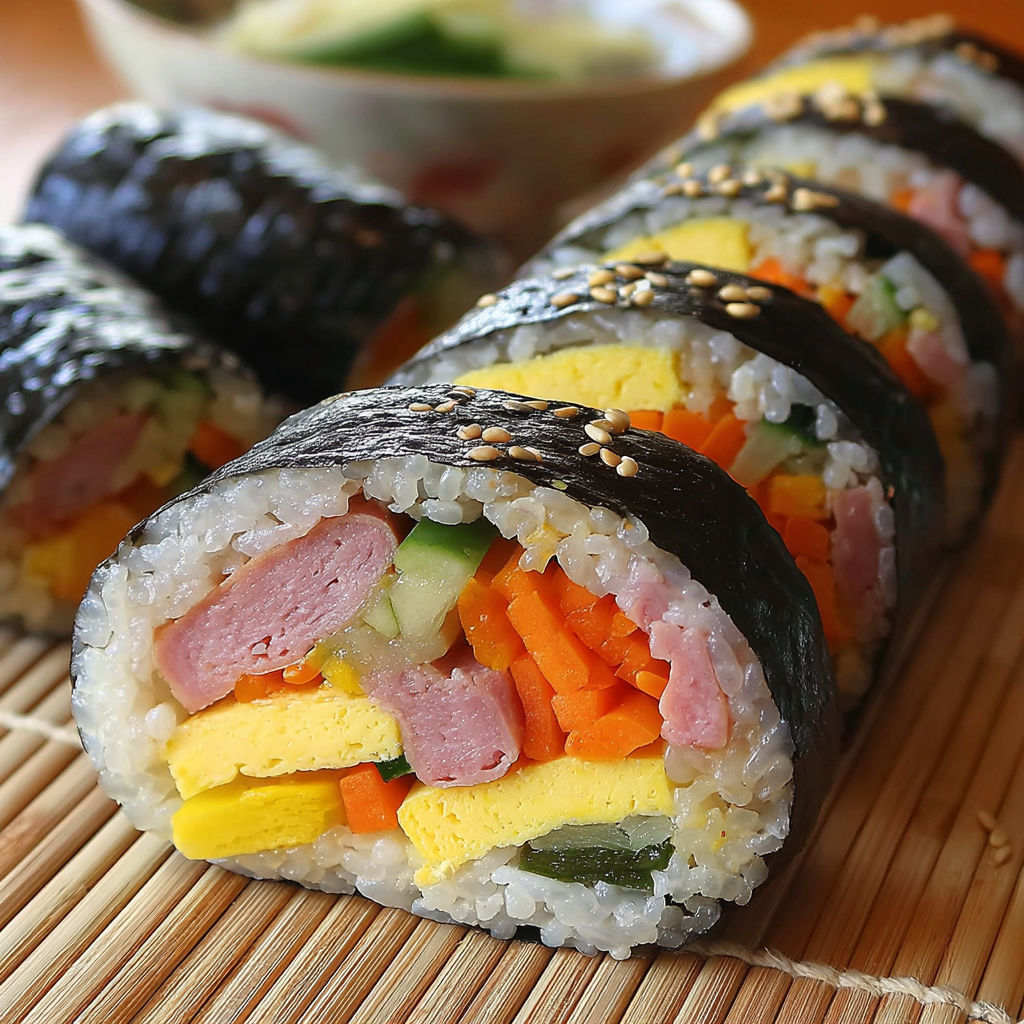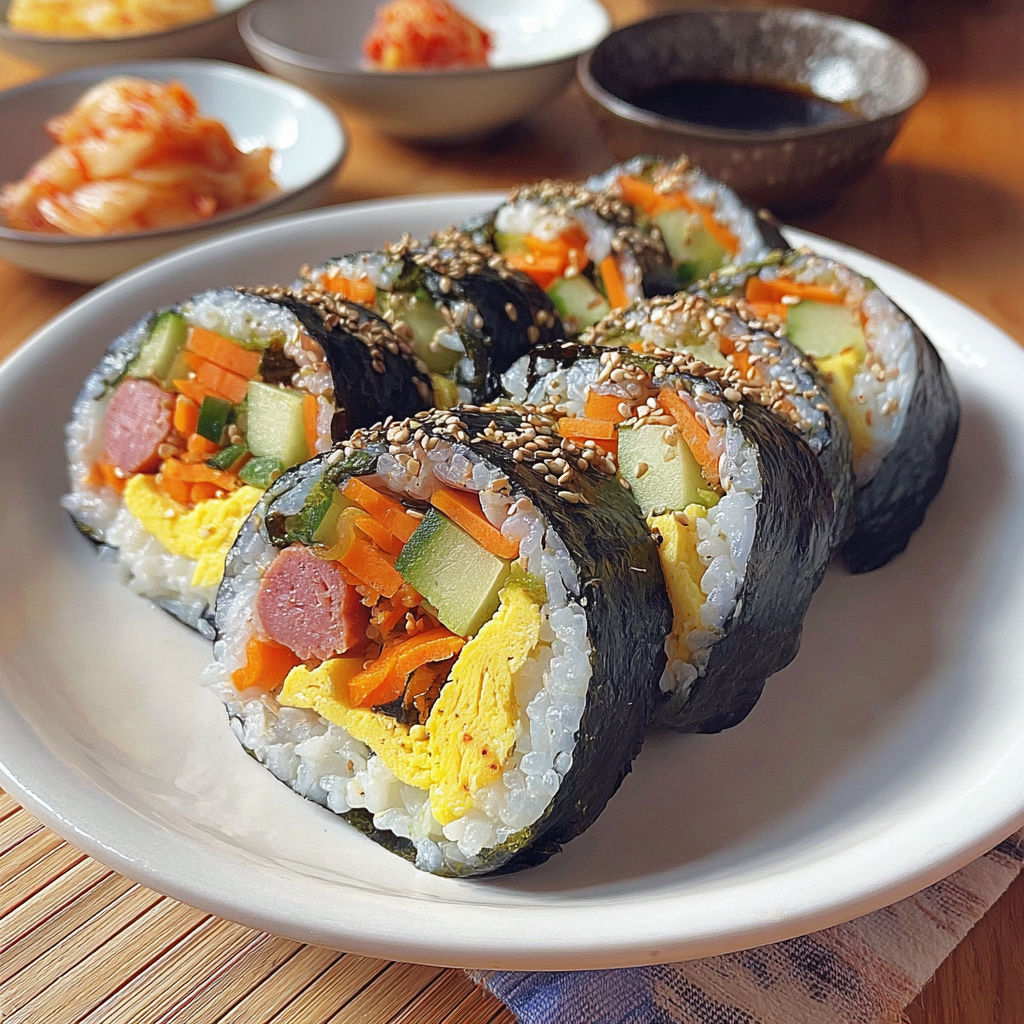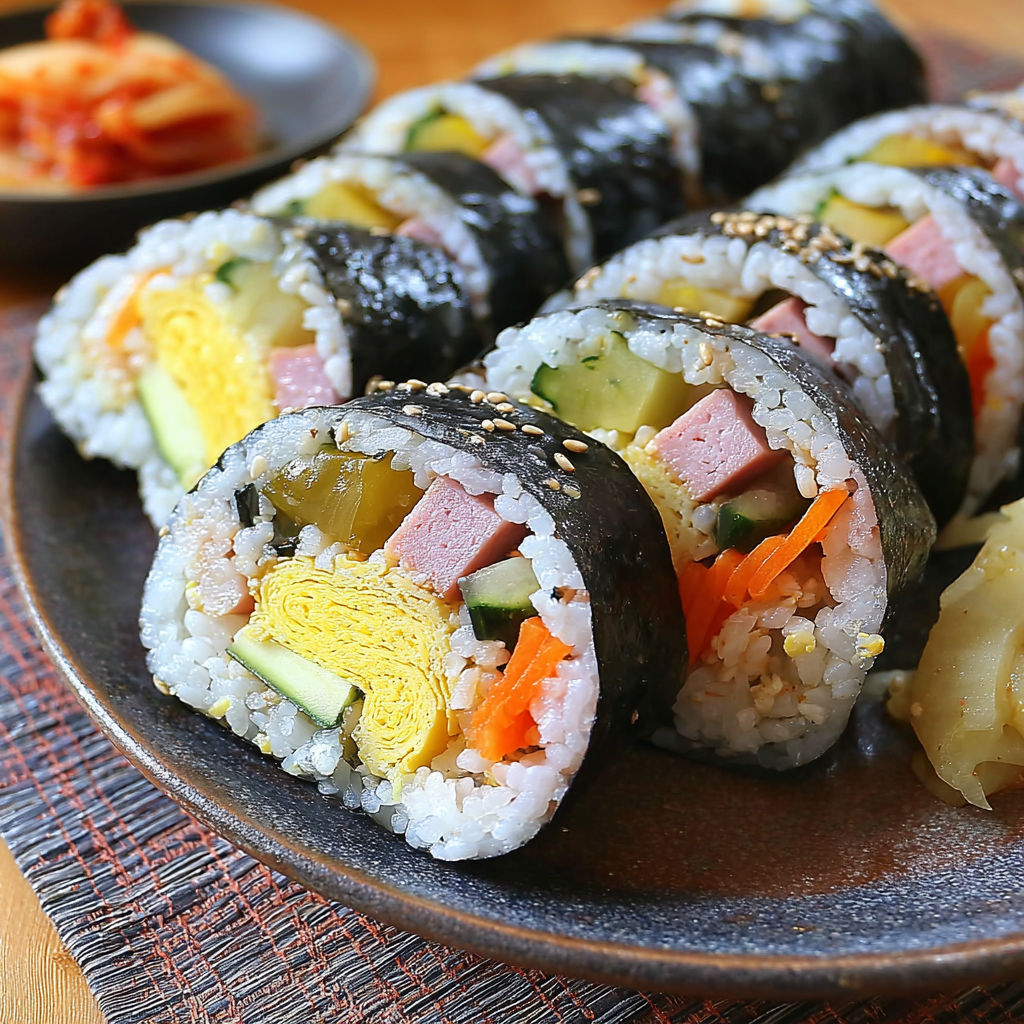 Save
Save
Kimbap is a vibrant and satisfying Korean seaweed rice roll that works perfectly for lunchboxes, picnics, or a quick snack. It brings together an appealing mix of textures and flavors in each bite, offering a balanced and nutritious meal that’s easy to customize to your taste.
I first made kimbap when I was curious about Korean food and quickly realized it is both fun to assemble and incredibly tasty. It has become a favorite for grab-and-go meals in my household.
Gather Your Ingredients
- Three eggs: the cooked strips provide a soft, rich texture and protein
- One cucumber: adds fresh crunch removing seeds can prevent excess moisture
- Three carrots: bring natural sweetness and color salting helps reduce water content for better texture
- One pickled yellow radish also called danmuji or takuan: offers a tangy contrast that brightens the roll
- One can of Spam or similar lunch meat: fried to golden perfection for umami and savoriness
- Two cups of short-grain white rice cooked: sticky enough to hold the roll together
- Four sheets of seaweed known as gim or nori: the essential wrapper adding flavor and structure
- Optional sesame oil and sesame seeds: add a lovely nuttiness and shine when brushed on top
How to Make It
- Sauté the Egg Strips:
- Beat the eggs well and pour into a lightly greased pan over medium heat. Cook gently until the eggs set fully but remain tender. Remove and slice into thin strips that will be layered inside the rolls. This step creates a protein-rich soft filling.
- Prepare the Vegetables and Spam:
- Cut the cucumber into long strips, optionally removing seeds to avoid sogginess. Slice the carrots and pickled radish into thin, even strips. Toss the carrots with a tablespoon of salt and let them rest for fifteen minutes to draw out moisture. Then squeeze them gently and sauté in a pan for four minutes until just tender. Remove the carrots and add oil to the pan before frying Spam slices about one minute per side until golden and crisp on the edges. Set all aside.
- Assemble the Kimbap Rolls:
- Lay a sheet of seaweed flat on a bamboo mat for rolling. Wet your fingers to spread a thin, even layer of rice over the seaweed, leaving an empty strip about two centimeters at the top edge to seal the roll later. Arrange the egg strips, cucumbers, carrots, pickled radish, and Spam neatly in the center of the rice.
- Roll and Seal:
- Lift the bamboo mat from the edge closest to you and fold the seaweed over the filling, pressing firmly to hold everything together. Continue rolling forward tightly until the entire sheet is wrapped. Use scattered grains of rice as glue if the roll does not seal properly by itself. Brush with sesame oil and sprinkle sesame seeds on top if desired for extra flavor and shine.

My favorite ingredient is the pickled yellow radish for its vibrant color and zingy flavor. It brings the classic kimbap character that always reminds me of family trips and shared meals around the table.
Flavor Boosters
Kimbap pairs well with a side of kimchi or a light dipping sauce made from soy sauce and a dash of sesame oil. Serve with fresh green tea or chilled barley tea to complement the flavors and keep the meal balanced.
Serving Suggestions
Swap in seasonal veggies like bell peppers, spinach, or pickled radish varieties to keep it fresh year-round. In warmer months, lightening up the roll with leafy greens or sprouts adds refreshing crunch. Winter calls for heartier fillings like cooked mushrooms or braised beef.
Creative Twists
You can swap Spam for cooked chicken, tuna, or even marinated tofu for a vegetarian twist. Substitute the danmuji with pickled cucumber or carrots if you prefer milder pickles. Brown rice can replace white rice for added fiber though it may alter roll texture.

This kimbap recipe combines fresh ingredients and time-tested techniques for a delicious and impressive meal that’s perfect for any occasion.
Recipe FAQs
- → What type of rice is best for seaweed rolls?
Short-grain white rice works best as it’s sticky enough to hold the roll together without falling apart.
- → Can I use other proteins besides spam?
Yes, cooked fish, beef, or tofu can replace spam to suit different tastes and dietary needs.
- → How do I prepare the vegetables for the rolls?
Vegetables like carrots are salted and softened by sitting and sautéing, while cucumbers can be seeded and sliced thinly for texture.
- → What is the purpose of brushing sesame oil on the rolls?
Brushing sesame oil adds a rich, nutty aroma and enhances the flavor while preventing the rice from drying out.
- → How should I roll the seaweed to keep fillings intact?
Using a bamboo mat, press firmly as you roll to ensure a tight, even roll that holds all ingredients securely.
